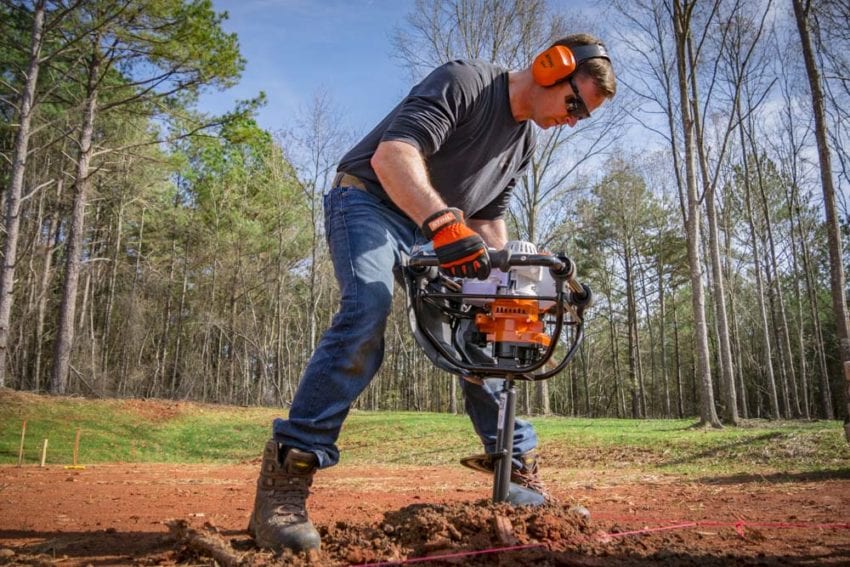Hearing protection is something we talk a lot about on any job. Hearing loss is one of those things that happens over time, so it’s not always a priority for younger guys and gals. But that scene of an old lady shouting at her husband just to be heard is only cute in movies and TV. It sucks in real life. With that in mind, we decided to put together a quick guide to understanding sound pressure level (SPL) and the decibel scale (or dB scale).
What is Sound Pressure Level (SPL)?
Since we’re going for a functional level of understanding and not preparing you for a final exam, I’m going to skip some of the fine details and focus on the general concepts.
Sound pressure level, or SPL, is a measurement of sound pressure that uses Pascals (Pa) as its unit of measurement. We convert that into the more popular decibel scale or dB scale. Simply put, decibels are a measure of the sound pressure level.
Sound pressure is the difference between the pressure from a sound wave and the ambient pressure of what the sound is traveling through (usually air for our purposes).
The reason sound pressure levels and decibels are so important is that it gives us a numerical scale to work with to help prevent hearing loss.
Sound Pressure Level and the Decibel Scale
There are two major points to keep in mind when it comes to the dB scale: the actual sound pressure level and how loud something sounds.
There are tons of decibel equivalent examples out there to give you a general idea of how loud something sounds at a certain decibel level like the one we’ve included.
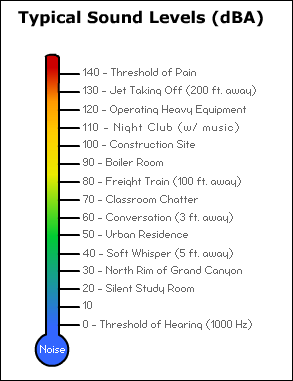
How Sound Pressure Level Works – The 6dB Rule
When it comes to the sound pressure level (keeping in mind that sound pressure does the actual damage), the effect is based on the distance from the source. Let’s say you have a sound that’s 80 decibels from 20 feet away. If you increase that sound pressure level by 6 decibels, it’s like listening to the original 80 decibels from 10 feet away.
Let’s go back to the start—80 decibels from 20 feet away. Now let’s say you move to 40 feet away (instead of turning up the volume), the SPL drops to 72 decibels. The relationship is always a 6-decibel change for every halving or doubling of the distance and it’s called the 6 dB rule.
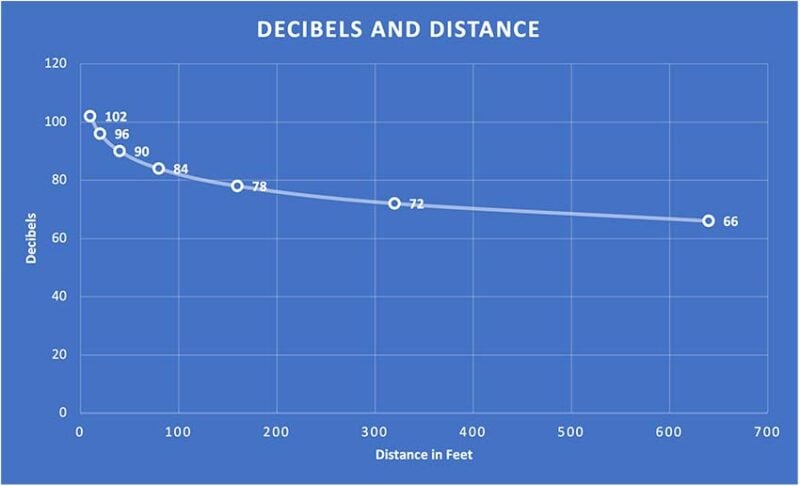
Here are two ways to look at it:
Starting with a 102-decibel sound from 10 feet away, you move…
- … to 20 feet: the SPL is 96 dB
- … to 40 feet: the SPL is 90 dB
- … to 80 feet: the SPL is 84 dB
- … to 160 feet: the SPL is 78 dB
Starting with a 70-decibel sound from 100 feet away, you turn up the SPL to…
- 76 dB: it’s like the original noise at 50 feet
- 82 dB: it’s like the original noise at 25 feet
- 88 dB: it’s like the original noise at 12.5 feet
- 94 dB: it’s like the original noise at 6.25 feet
How Perceived Loudness Works
When it comes to how loud something sounds, it’s a slightly different ballgame, but we can still understand it using the decibel scale. This one is a little more straightforward: as you move up 10 decibels, the noise sounds twice as loud.
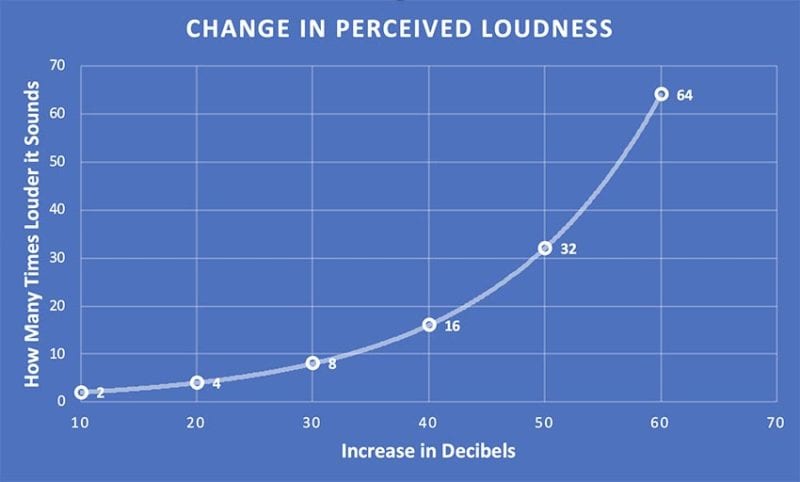
Compared to a 60 dB sound…
- 70 dB sounds 2x as loud
- 80 dB sounds 4x as loud
- 90 dB sounds 8x as loud and so on…
How Sound Pressure Level and the Decibel Scale Affect Work
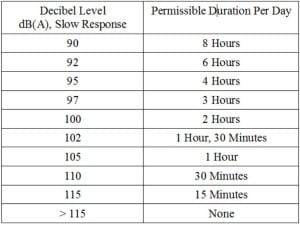
OSHA defines how much noise you can be exposed to over specific periods of time. For example, you can work for 8 hours with your ears catching 90 decibels or you can work for 1 hour at 105 decibels. Both of those are limits per day.
Hearing protection lets us work longer in louder environments without violating those OSHA limits. When you’re shopping for hearing protection, look for the NRR value—Noise Reduction Rating. It very simply tells you how many decibels the device reduces.
If you’re working in an environment that’s a pretty constant 105 decibels and you use earmuffs with an NRR of 25, your ears are only exposed to 80 decibels. It’s pretty simple!

